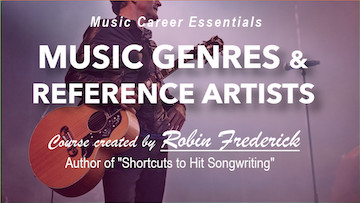Songwriters: Odie Hawkins, Nate Mendel, Chris Shiflett, Georg Ruthenberg, David Eric Grohl
I was looking through the songs I’ve analyzed over the last couple years and realized I’d never done a song by Foo Fighters. Their huge presence looms over the Rock genre, inspiring dozens of top bands. Grammy wins for Best Rock Album and over a decade of hit Rock songs means that I am long overdue.
This beautiful song from 2012 is one of my favorites. And David Grohl has said that it’s one of his. The passionate chorus lyric and unpredictable but catchy melody make this song a Rock classic that will live on and on.
Watch the video. Read the lyrics.
Watch on YouTube
Read the lyric
Shortcut numbers refer to my books “Shortcuts to Hit Songwriting” (“Hit”) and “Shortcuts to Songwriting for Film & TV” (“Film/TV”).
GENRE
The genre is Mainstream Rock. Grohl’s gritty vocal, the layered electric guitars, and hard, punchy drums give it plenty of Rock cred. At the same time, the lyric is thoughtful and the theme serious. There’s an intimate approach to the verses that bursts into a solid, rockin’ chorus with a powerful message that landed this song at the top of the Rock charts.
STRUCTURE
The song structure is:
VERSE / VERSE / PRE-CHORUS / CHORUS
VERSE / PRE-CHORUS / CHORUS
DOUBLE PRE-CHORUS / HALF VERSE / CHORUS
The song opens with a double verse. The verses each consist of two long lyric lines broken up into short phrases. A pre-chorus (“But it’s all right…”) provides some release and begins the build up to the huge vocal leap at the top of the chorus (“Easy for you to say…”).
The overall structure is typical for a hit song up until the bridge. Grohl uses a double pre-chorus as the bridge before going into a final verse and chorus. Notice that he doesn’t return to the pre-chorus again, using just a half verse before roaring into the final chorus of the song.






 Let’s say you’re a hard rockin’ band out there working the club circuit. You’d like to get a record deal but can’t seem to interest a label. Your fans love you. You put on a killer live show and tour like crazy, so why won’t the the music industry sign you up?
Let’s say you’re a hard rockin’ band out there working the club circuit. You’d like to get a record deal but can’t seem to interest a label. Your fans love you. You put on a killer live show and tour like crazy, so why won’t the the music industry sign you up?